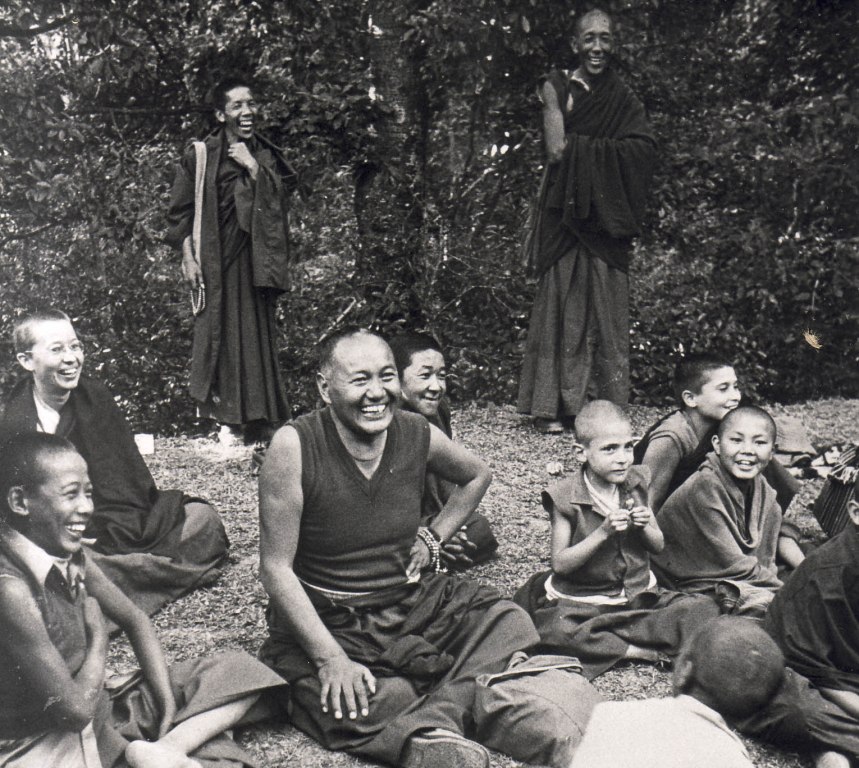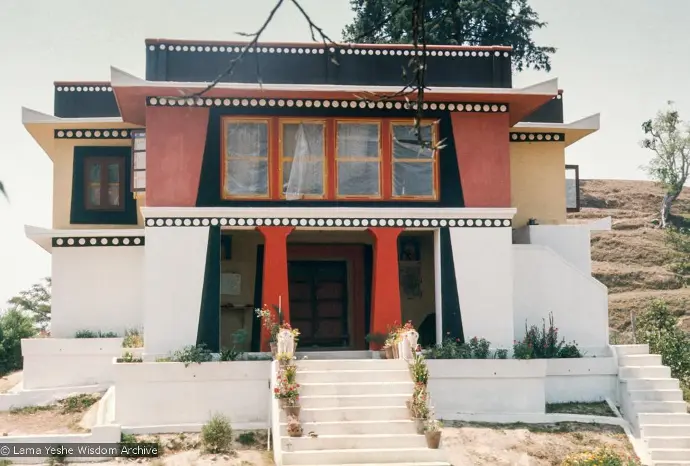Kopan Monastery - our history

After fleeing Tibet in 1959, Lama Zopa Rinpoche and Lama Yeshe met in the Indian refugee camp of Buxa Duar and came to Nepal in 1968 with their first disciple, Zina Rachevsky. They first resided near Boudhanath stupa, a few miles east of Kathmandu.
After a couple of years, however, they were able to purchase and move to an old house with a small amount of land on top of the Kopan hill that used to belong to the astrologer to the king of Nepal. The first temple was constructed in 1971 -72, funded almost completly by the lama’s increasing number of Western disciples.
There the lamas established the Nepal Buddhist Mahayana Center Gompa. The vision Lama Yeshe (1935–84) and Lama Zopa Rinpoche had when they founded Kopan Monastery in 1969 was to produce human beings with a good heart and the wisdom needed to serve others all over the world. Lama Yeshe’s idea was to create a monastery for young himalayan monks and nuns, and a center for the study and practicew of Tibetan Buddhism for foreign students, and he moved to actualize his vision.
The first monks joined soon after the land was purchased. They were mostly young boys from the Solu Khumbu and Manang area of Nepal. Many of them were sent to the new, budding monastery by Lama Zopa Rinpoche, who was at that time re-establishing the Lawudo Retreat Center, a please where he meditated in his previous life.

At the same time the lamas began giving Dharma talks to mainly Western students who had heard about these extraordinary lamas at Kopan. Regular weekly classes were held and the first one-month meditation course was held in the spring of 1971. Twenty-five students attended the first course; double that number the second, a year later. By 1973, 200 students were attending the then twice-yearly one-month courses, living under conditions which are difficult to imagine now. Sleeping on the floor on straw mats was the norm, the water supply depended on a local spring, and food was carried up the hill by porters.
Foreigners, disillusioned with the increased materialist outlook in the West, and looking for meaning in their life kept flocking to Kopan to attend the teachings of the lamas. Many of them took ordination vows, and stayed as a small western sangha community at Kopan under the supervision of Lama Yeshe, till they were forced to leave Nepal due to a change in Nepal’s visa regulations in 1985.
As they say – the rest is history.

Over the next 30 years Kopan developed and grew into one of the biggest Gelug monasteries in Nepal with 380 monk and 360 nuns, and an extensive program of Buddhist courses for foreigners. The one-month course first taught in 1971 became an annual event and is till happening now, with more than 250 people attending every year.
The nuns who were originally staying at Kopan and attending classes with the monks moved into their own place in 1994. The nunnery is now home to 360 nuns, studying philosophy, and engaging in intensive practice such as the annual Nyung ne retreat.
Extensive building activities in the 90’s up to the present time have provided improved accommodation and living conditions for the monks and nuns, as well as for the many foreigners who come in large numbers every year to learn about Buddhism.

